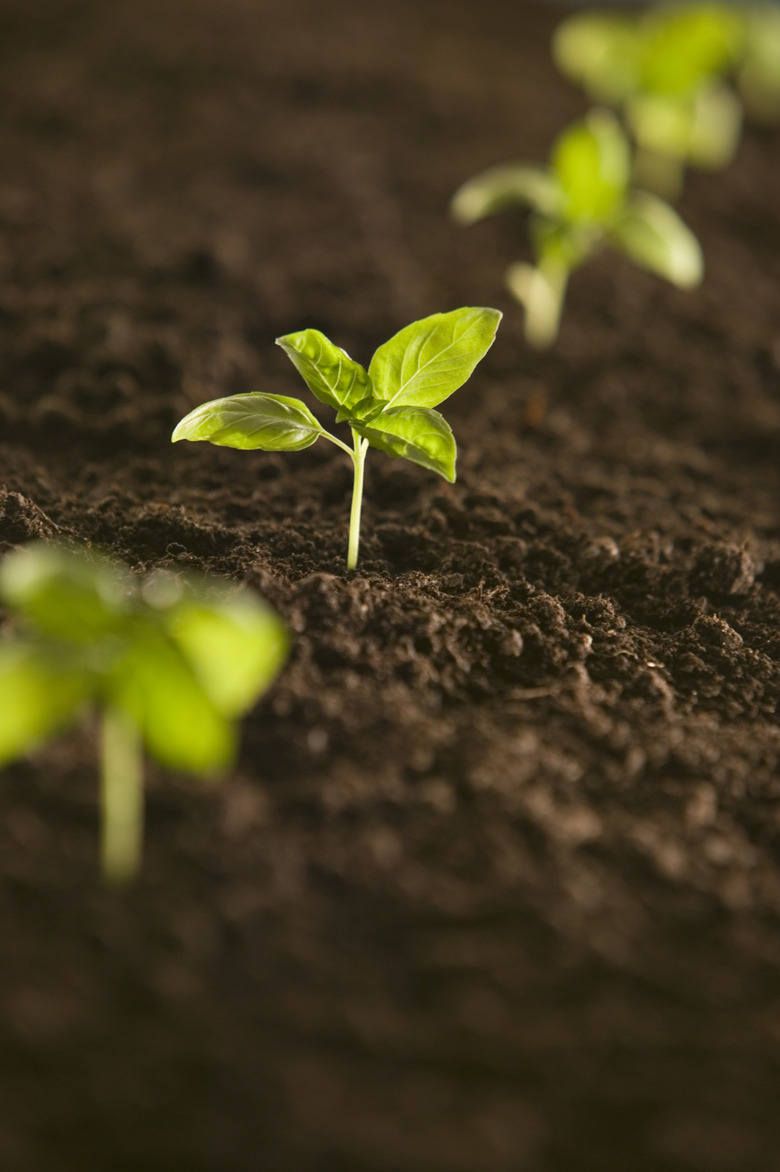Soil Pollution Remedies
Often you can't tell if soil is polluted by looking at it. Sometimes the presence of oil, waste or litter will indicate unwanted substances, but generally it takes soil tests to reveal pollutants. Cases exist where homes or schools get built over leaking solid waste sites, or in areas contaminated by mining or industrial operations, and later prove hazardous to inhabitants. Once contaminants enter the soil, cleaning them up can be difficult and expensive.
Treatment Considerations
Treatment Considerations
Each case of soil pollution needs careful consideration to decide on the most successful clean-up strategy. Variables include the type of contaminant, extent of pollution, soil type, soil condition, soil location, and weather, according to the U.S. Department of Agriculture. The treatment chosen out of the many available depends on what preliminary testing and evaluation reveal. Treatment occurs at the site of contamination, or soil is dug up and treated elsewhere. Treatment cost is also important, with some solutions costly, lengthy or labor-intensive.
Physical and Chemical Treatments
Physical and Chemical Treatments
The U.S. Environmental Protection Agency (EPA) explains the many soil remediation techniques. Vapor extraction can be used to treat soil contaminated with volatile compounds on or off site. In either case, with vapor extraction, air is passed through the soil using a vacuum. This frees the volatile contaminates from their attraction to the soil. The freed volatiles are vented out. Solidification and stabilization (S/S) are on-site techniques used to treat radioactive, hazardous and mixed wastes. With solidification, waste in soil is physically trapped in place by containing it to form a solid. Stabilization immobilizes contaminants using chemical means, rather than physical. Commonly used inorganic stabilization agents include carbon and sulfur-based binders.
Another technique, soil flushing, literally involves flushing a contaminated area with water or an appropriate liquid solution. After flushing, the fluid carrying the contaminants is collected and disposed of or treated. Positively charged contaminants, like heavy metals, can be removed using electrokinetic separation, which involves passing an electric current between two electrodes buried in contaminated soil. In off-site treatment, sometimes soil contaminated with petroleum is excavated and put into paving material.
Biological Treatments
Biological Treatments
Some soil microorganisms such as bacteria can metabolize and actually thrive on pollutants; these microbes convert pollutants to less mobile or less hazardous forms. Called bioremediation, this treats contamination from oil or petroleum products, pesticides and solvents. Microbes need good growth conditions, however. Often, substances that encourage microbe growth, such as molasses and vegetable oil or oxygen may be added to the soil, according to the EPA.
In phytoremediation, plants that actively take up heavy metals, such as arsenic and lead, are planted in contaminated soil. The soil is cleaned as metals are taken up and become concentrated in their foliage. This is a relatively slow process, however, that may take multiple years. Also, the plants themselves become contaminated as they take up the metals and can pose a hazard to humans and wildlife that consume them. The EPA warns that care must be taken to properly segregate the plants.
Thermal Treatments
Thermal Treatments
Different techniques of applying heat to soils help remove volatile contaminants. Treatments include steam injection and extraction, radio-frequency heating, conductive heating and electrical resistance heating, according to the EPA. A more extreme example of heat treatment is vitrification, where high temperatures turn soil to glass, capturing nonvolatile contaminants such as heavy metals and radioactive materials. Treatments for excavated soil that use heat include incineration and thermal desorption. Incineration heats soil at temperatures between 870 and 1,200 degrees Celsius (1,600 to 2,200 F) to volatilize organic contaminants, which are then run through an air collection system for oxidative breakdown. Thermal desorption volatilizes pollutants, which are then removed by a gas treatment system.
References
- Soil-Net.com: Case Studies: Soil Pollution
- United States Department of Agriculture: Forest Service: Technology & Development Program: Treatment of Petroleum-Contaminated Soil in Cold, Wet, Remote Regions
- U.S. Environmental Protection Agency: Superfund: Remediation Technologies
- U.S. Environmental Protection Agency: A Citizen's Guide to Bioremediation
- Fairfax County Virginia: Northern Virginia Soil and Water Conservation District: Phytoremediation — Using Plants to Clean Up Polluted Soil
- U.S. Environmental Protection Agency: About EPA: The Love Canal Tragedy
Cite This Article
MLA
Csanyi, Carolyn. "Soil Pollution Remedies" sciencing.com, https://www.sciencing.com/soil-pollution-remedies-23769/. 24 April 2017.
APA
Csanyi, Carolyn. (2017, April 24). Soil Pollution Remedies. sciencing.com. Retrieved from https://www.sciencing.com/soil-pollution-remedies-23769/
Chicago
Csanyi, Carolyn. Soil Pollution Remedies last modified March 24, 2022. https://www.sciencing.com/soil-pollution-remedies-23769/
